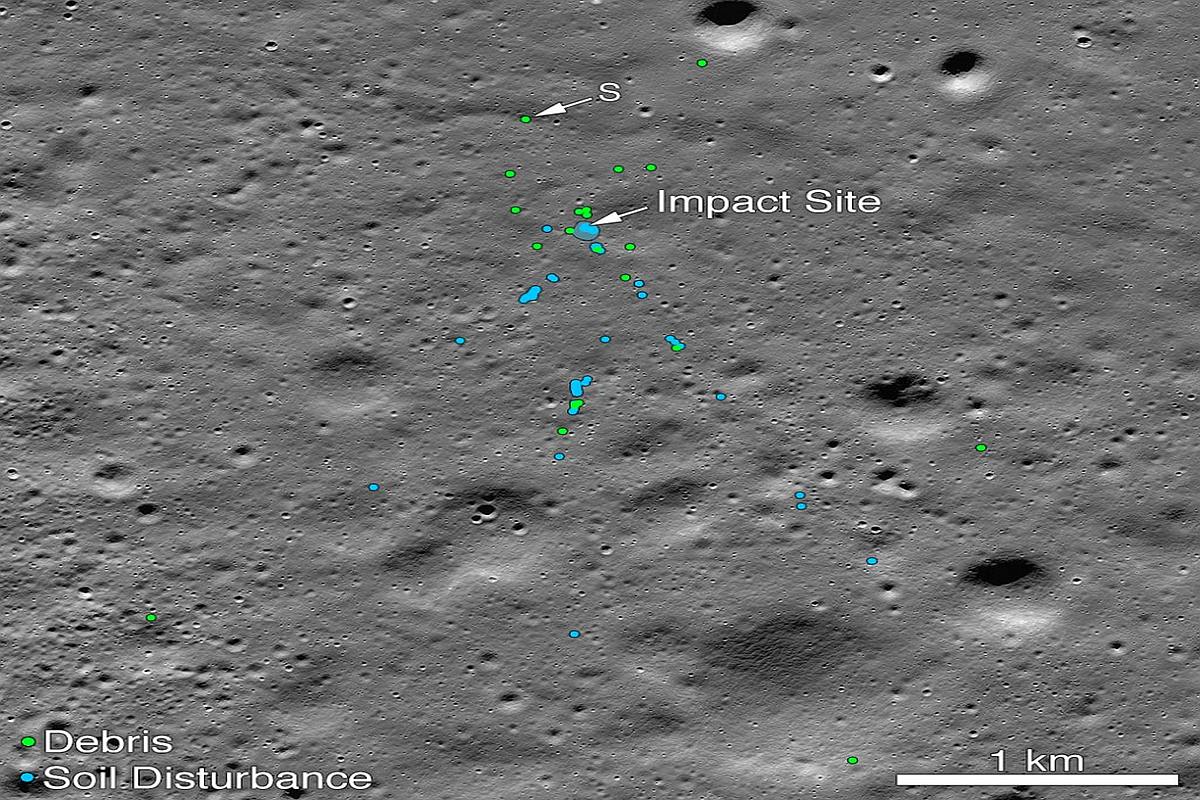After three months of Vikram lander’s hard-landing on the moon’s surface which was part of the Indian Space Research Organisation’s (ISRO) ambitious Chandrayaan-2 mission, the United States’ space agency NASA on Tuesday stated that it has found the lander’s debris.
The National Aeronautics and Space Administration (NASA) said that its Lunar Reconnaissance Orbiter (LRO) Camera sighted the remains of Vikram lander on the lunar surface. NASA’s confirmation came after an Indian computer programmer and mechanical engineer named Shanmuga Subramanian contacted NASA’s project after which, the American space agency confirmed the identification by comparing before and after images.
Advertisement
The Chandrayaan-2 Vikram lander was targeted for a highland smooth plain landing about 600 kilometres from the south pole but unfortunately, ISRO lost contact with the lander shortly before the scheduled touchdown on September 7.
NASA in its statement said, “Despite the loss, getting that close to the surface was an amazing achievement.” The Lunar Reconnaissance Orbiter Camera team released the first image of the site on September 26 and many people, according to NASA, downloaded the image to search for signs of Vikram.
When the images for the first mosaic were acquired the impact point was poorly illuminated and thus not easily identifiable. Two subsequent image sequences were acquired on October 14 and October 15, and November 11.
